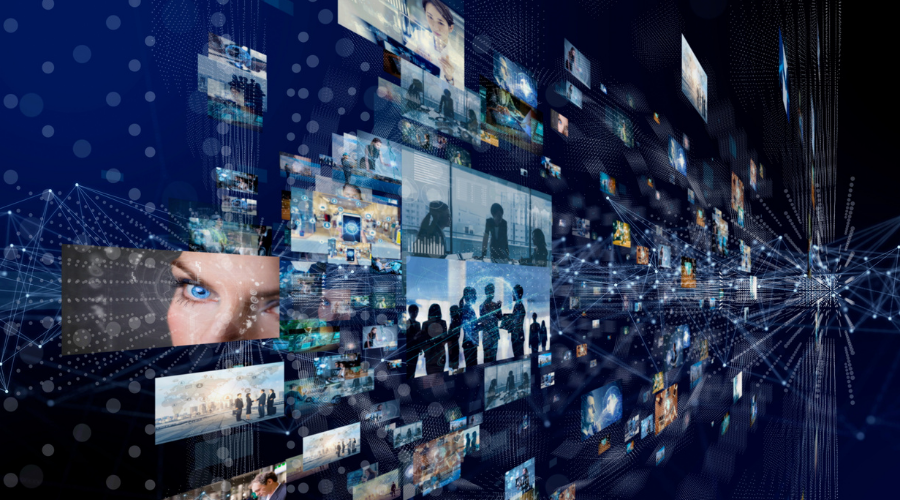How Artificial Intelligence Enhances Productivity & Proactivity Across an Organization

AI Enhancements to Existing Technologies for Driving Efficiency & Safety
Artificial intelligence has improved efficiencies and optimized processes for a broad array of industries and professions, including physical security. Physical security teams have relied on video surveillance for years to monitor and record activity, and they have used automated sensors to measure keypad entrances and exits. The introduction of AI is a leap forward for such technologies, because it takes the raw data from sensors and cameras and enables actionable, meaningful analysis.
With assistance from AI-driven technology, organizations can re-allocate security resources based on insight into where support is most needed and by streamlining manual efforts to collect and understand critical data. These tasks can be highly repetitive or inefficient for humans to handle – such as monitoring access to a secure room – or even may be highly dangerous – such as detecting explosive or chemical materials. Solutions such as drones and robots can survey areas that are either difficult to reach or monitor; some areas, such as an electrical substation, power plant, or mining facility, may too large to effectively patrol or require hefty investments in staffing. Other areas, such as an industrial chemical site, may be too dangerous to monitor in person. Clearly, in many cases technology can enhance – though not substitute – the efforts of human personnel, who, with access to timely and comprehensive information, can best assess and determine how to respond in a variety of situations that arise.
Of course, the impact of AI is far reaching even beyond the realm of security. AI-driven Smart Building technology leverages the power of artificial intelligence increase facility safety, reduce operational costs, improve energy usage, and enhance tenant satisfaction. Smart buildings not only automatically monitor factors such as temperature, humidity, smoke, carbon dioxide, and carbon monoxide levels; sometimes they also enable smart parking; by monitoring the number of parking spaces in a garage or parking lot and integrating that with an app that drivers can use to locate an available parking spot.
Video Analytics – Realizing the Value of Video with AI
Video content analytics, driven by Deep Learning and Artificial Intelligence (AI), is another example of emerging and evolving technology that is increasingly used by stakeholders across organizations to complement video surveillance systems and derive insights from video content. Video may contain volumes of raw data that is difficult to effectively monitor in real-time or manually review after an incident. With AI-powered object detection, identification, and classification, video analysis solutions process video, identify the objects and behaviors that are detected, and index them so the metadata can easily and quickly searched and analyzed. This creates a structured database of information out of the unstructured video data to power granular search, smart alerting, and even comprehensive reporting.
Video analytics aggregates data so that multiple teams and functions within an organization can research traffic or behavioral trends, benchmark normal activity, and develop strategies for improved efficiency. Whether a security monitor or buildings operations manager, many of the questions or needs answered by individual smart sensors can be addressed with video intelligence. Aggregated video data can be converted into dashboard reports and heatmaps to uncover trends in parking lot, entryway, or cross-campus person or vehicle activity and common navigational patterns. Armed with key data, decision makers and their teams can develop contingency plans, prevent future incidents and traffic bottlenecks, and deploy staff optimally.
Based on these insights, operators can also configure real-time alerting that is triggered by pre-defined conditions and behaviors and which allows for immediate assessment and response to evolving situations – whether security risks, developing emergencies, crowd or queue formations in a store or airport, and even alerts based on sophisticated analytics such as face matching, license plate recognition (LPR) and appearance similarity. These capabilities allow organizations and end users to respond proactively to a variety of situations, based on a single technology investment.
When proactive prevention is not possible, video analytics still drives productivity by making incident review and scene understanding quicker and more seamless. Whereas manual video review is usually reserved for security personnel – and, even then, is time consuming and prone to human error – video analytics-driven review allows for quick and accurate search and analysis across multiple cameras based on granular search filters. Faster forensic review of incidents leads to better incident investigations and quicker case resolution.
Video content analytics, among other AI-driven technologies, are one way organizations can enhance their existing technology stack and drive impactful, cross-company effectivity when it comes to safety, security, and efficiency.
Signup to receive a monthly blog digest.